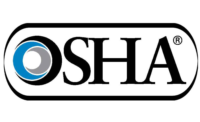 San Diego CA -- Why don’t more companies want to publicize their safety programs? On the floor of the National Safety Congress Expo, held here in San Diego, ISHN traded war stories about aborted safety program case studies with a senior marketing communications manager with one of the exhibitors.
San Diego CA -- Why don’t more companies want to publicize their safety programs? On the floor of the National Safety Congress Expo, held here in San Diego, ISHN traded war stories about aborted safety program case studies with a senior marketing communications manager with one of the exhibitors.
She is not quoted by name because the conversation with ISHN was for background only, and the source did not expect to be quoted by name and company.
Once it reaches the legal department...
She spoke of how hard of a time she and her company has getting approvals from customers to write up case studies of their safety programs. “Safety professionals are passionate about what they do, and are more than ready to talk about their programs – with pride,” she says. “But once the approval process reaches the legal department, all bets are off. And most often, after delays, the attorneys nix the case study.”
ISHN has found similar barriers when attempting to publish safety program case studies. Often, the few companies interested in publicizing their safety success story are trying to recover from a “black eye” and bad PR from a workplace fatality or highly publicized OSHA enforcement case. In one case, ISHN interviewed a top safety pro at a well-known brand company about their safety investments and systems – following the fatality of an employee. The story could not be fully described without reference to the fatality, which ISHN included in the piece. The safety pro reacted favorably to the story, but was over-ruled by higher ups who wanted no mention of the fatality. The story was deep-sixed.
There are exceptions
To be sure, there are exceptions to the rule that many companies remain publicly silent about the inner workings of their safety program. Companies achieving injury-free milestones often send out press releases. Companies winning safety awards in their specific industry also send out press releases. Voluntary Protection Program participants are very often transparent about their VPP programs, share details with other VPP sites at regional and national meetings, and their corporate parents run advertisements in meeting programs highlighting the overall company’s commitment to worker safety and health.
What’s the takeaway here? It could be only the minority of companies see the value of their safety programs as adding to their brand prestige, corporate mission and core competencies, and contributing to the company’s corporate social responsibility “good neighbor” philosophy. For the rest, publicizing safety activities and records can be considered proprietary information, raising a red flag to OSHA inspectors, or dredge up past safety problems. To many corporate lawyers, it seems no news about safety is good news.




